
John Keats was an English poet of the second generation of Romantic poets, along with Lord Byron and Percy Bysshe Shelley. His poems had been in publication for less than four years when he died of tuberculosis at the age of 25. They were indifferently received in his lifetime, but his fame grew rapidly after his death. By the end of the century, he was placed in the canon of English literature, strongly influencing many writers of the Pre-Raphaelite Brotherhood; the Encyclopædia Britannica of 1888 called one ode "one of the final masterpieces".

John Bacon was a British sculptor who worked in the late 18th century. Bacon has been reckoned the founder of the British School of sculpture. He won numerous awards, held the esteem of George III, and examples of his works adorn St Paul's Cathedral and Westminster Abbey in London, Christ Church, Oxford, Pembroke College, Oxford, Bath Abbey and Bristol Cathedral.

GKT School of Medical Education is the medical school of King's College London. The school has campuses at three institutions, Guy's Hospital (Southwark), King's College Hospital and St Thomas' Hospital (Lambeth) in London – with the initial of each hospital making up the acronymous name of the school. The school in its current guise was formed following a merger with the United Medical and Dental Schools of Guy's and St Thomas' Hospitals on 1 August 1998. As of 2023, the medical school is ranked 5th best in the UK for clinical medicine by U.S. News & World Report, and 10th best worldwide by Times Higher Education.

St Thomas' Hospital is a large NHS teaching hospital in Central London, England. Administratively part of the Guy's and St Thomas' NHS Foundation Trust, together with Guy's Hospital, Evelina London Children's Hospital, Royal Brompton Hospital and other sites. It is also a member of King's Health Partners, an academic health science centre, and is one of three sites used by King's College London GKT School of Medical Education.
Moorgate was one of the City of London, England's northern gates in its defensive wall, the last to be built. The gate took its name from the Moorfields, an area of marshy land that lay immediately north of the wall.
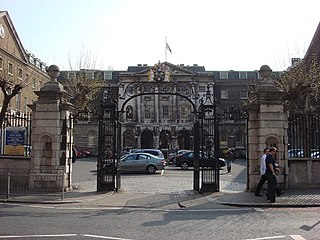
Guy's Hospital is an NHS hospital founded by Thomas Guy, located in the borough of Southwark in central London. It is part of Guy's and St Thomas' NHS Foundation Trust and one of the institutions that comprise the King's Health Partners, an academic health science centre.

"Ode on a Grecian Urn" is a poem written by the English Romantic poet John Keats in May 1819, first published anonymously in Annals of the Fine Arts for 1819.

The "Ode on Indolence" is one of five odes composed by English poet John Keats in the spring of 1819. The others were "Ode on a Grecian Urn", "Ode on Melancholy", "Ode to a Nightingale" and "Ode to Psyche". The poem describes the state of indolence, a word which is synonymous with "avoidance" or "laziness". The work was written during a time when Keats was presumably more than usually occupied with his material prospects. After finishing the spring poems, Keats wrote in June 1819 that its composition brought him more pleasure than anything else he had written that year. Unlike the other odes he wrote that year, "Ode on Indolence" was not published until 1848, 27 years after his death.

Sir Robert Clayton (1629–1707) was an English merchant banker, politician and Lord Mayor of London.
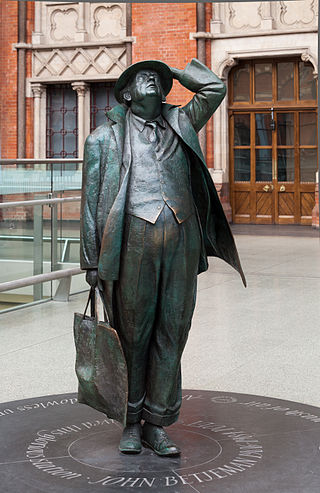
Martin Jennings, FRSS is a British sculptor who works in the figurative tradition, in bronze and stone. His statue of John Betjeman at St Pancras railway station was unveiled in 2007 and the statue of Philip Larkin at Hull Paragon Interchange station was presented in 2010. His statue of Mary Seacole (2016), one of his largest works, stands in the grounds of St Thomas' Hospital in central London, looking over the Thames towards the Houses of Parliament.

Stuart Williamson is a sculptor, teacher of sculpture and poet from North East England. He is a Fellow of the Royal British Society of Sculptors, a Member of the Society of Portrait Sculptors (UK), a Member of the National Sculpture Society (USA), and a Founding Member of the Portrait Sculptures Society of America. He is also a Member of the Salmagundi Club in Manhattan and was featured in their American Masters show in 2015.
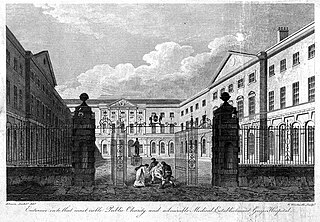
Guy's Campus is a campus of King's College London adjacent to Guy's Hospital and situated close to London Bridge and the Shard, on the South Bank of the River Thames in London. It is home to the Faculty of Life Sciences & Medicine and the Dental Institute.
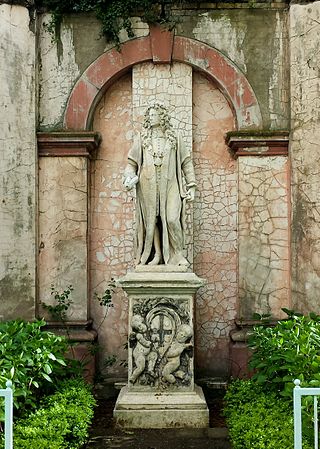
The statue of Robert Clayton stands at the entrance to the North Wing of St Thomas' Hospital, Lambeth, London. The sculptor was Grinling Gibbons, and the statue was executed around 1700–1714. Sir Robert was a banker, politician and Lord Mayor of London. As President of St Thomas', he was responsible for the complete rebuilding of the hospital, and associated church in the late 17th century. The statue was designated a Grade I listed structure in 1979.
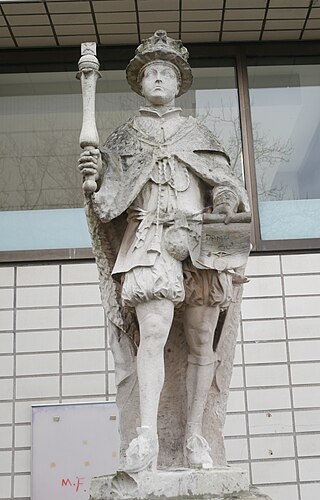
The statue of Edward VI by Thomas Cartwright at St Thomas' Hospital, Lambeth, London is one of two statues of that king at the hospital. Both commemorate Edward's re-founding of the institution in 1551. The statue was designed by Nathaniel Hanwell and carved by Thomas Cartwright in 1682, during the rebuilding undertaken by Sir Robert Clayton when President of the hospital. The statue originally formed the centrepiece of a group of figures which adorned the gateway on Borough High Street. It was moved to its current location at the north entrance to the North Wing on Lambeth Palace Road in the 20th century. It was designated a Grade II* listed structure in 1979.
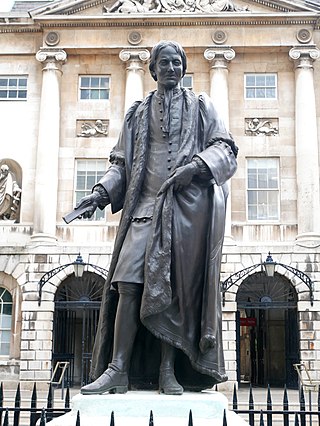
A statue of Thomas Guy stands in the forecourt of Guy's Hospital in the borough of Southwark in Central London. The statue is Grade II listed.
There are two statues of the poet John Keats in London.













